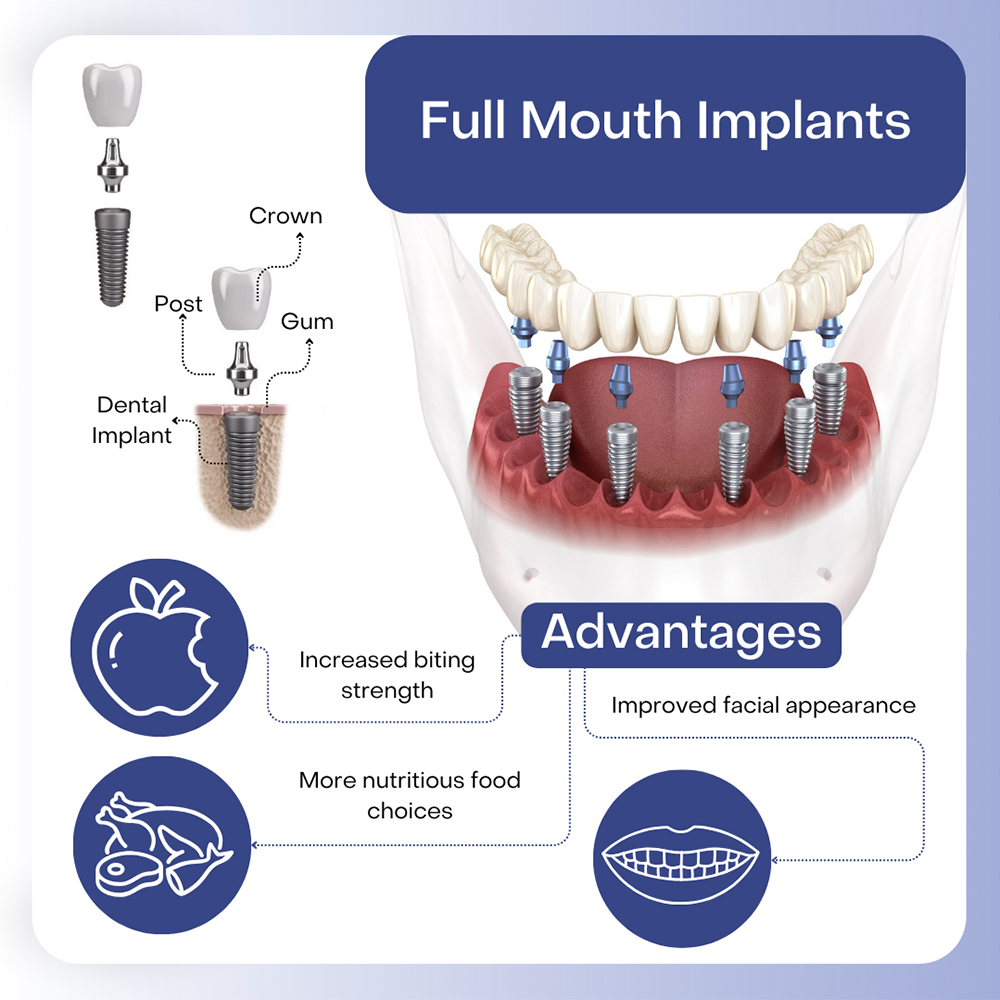Fascination About Dental Sense
Fascination About Dental Sense
Blog Article
Some Known Factual Statements About Dental Sense
Table of ContentsWhat Does Dental Sense Mean?The smart Trick of Dental Sense That Nobody is Talking AboutIndicators on Dental Sense You Should KnowDental Sense Fundamentals Explained
are clinical gadgets surgically implanted into the jaw to recover a person's capacity to eat or their look. They offer support for man-made (fake) teeth, such as crowns, bridges, or dentures. When a tooth is lost as a result of injury or condition, a person can experience difficulties such as quick bone loss, faulty speech, or modifications to eating patterns that lead to discomfort.Oral dental implant systems contain an oral implant body and dental implant abutment and may also include a joint fixation screw. Dental implants. The oral implant body is surgically put in the jawbone in location of the tooth's origin. The dental implant abutment is typically connected to the dental implant body by the abutment fixation screw and extends with gums into the mouth to sustain the attached fabricated teeth
(https://filesharingtalk.com/members/608667-dentalsense1)Structure of The Oral Implant System choosing dental implants, speak with your dental copyright concerning the potential benefits and threats, and whether you are a candidate for the procedure. Points to consider: Your total health is an essential consider figuring out whether you are a good candidate for oral implants, how much time it will take to recover, and how much time the implant might remain in location.
Smoking may impact the healing process and reduce the lasting success of the implant. The recovery procedure for the implant body may take several months or longer, during which time you generally have a short-lived joint instead of the tooth. the oral implant treatment: Thoroughly adhere to the dental health guidelines offered to you by your dental service provider.
The Only Guide for Dental Sense
Implant failing can cause the need for one more medical treatment to take care of or change the implant system. Recovers the ability to chew Brings back cosmetic look Helps keep the jawbone from reducing as a result of bone loss Maintains the health and wellness of the surrounding bone and gum tissues Helps keep adjacent (neighboring) teeth stable Enhances lifestyle Damage to surrounding natural teeth during implant placement Injury to the surrounding tissues during surgery, such as sinus perforation Injury during surgery (for example, fracture of surrounding jawbone) Poor function, such as seeming like the teeth do not attack together generally A sensation that the tooth is loosened or twisting in position resulting from a joint screw loosening Implant body failing (looseness of the implant body) as a result of systemic infection, which might be a lot more likely in patients with unrestrained diabetes mellitus as a result of neighborhood infection in bone and gum tissues supporting the dental implant body because of delayed recovery, which may be most likely in people click here to find out more that smoke Problem cleansing the gums around the implant, causing poor dental hygiene Unattended periodontal disease Post-surgical feeling numb because of nerve impingement or damages Constantly notify healthcare providers and imaging specialists that you have oral implants before any type of magnetic vibration imaging (MRI) or x-ray procedures.
FDA is not familiar with any type of negative events reported for MRI or x-ray procedures with oral implants. Dental implants systems are commonly made of materials that adhere to international consensus requirements of the International Company for Standardization (ISO) or ASTM International. These standards have details of what makes a risk-free product.

An oral implant is a framework that replaces a missing tooth. With screw-like gadgets, the doctor inserts a dental implant right into the jawbone, and it works as a support for a fabricated tooth, called a crown. A device called a joint attaches the fabricated tooth to the oral implant. The crown is customized to fit the individual's mouth and match the color of their teeth.
The Best Guide To Dental Sense
Some people are not eligible for oral implant surgical procedure. It is for oral surgeons to operate on individuals with: acute illnessuncontrollable metabolic diseasebone or soft cells condition or infectionIf these problems are dealt with, a person can have the surgical treatment. In, oral surgeons refrain from operating people with: If individuals with any one of the above undergo dental implant surgical procedure, there is a greater threat of the implant stopping working.

Dental implant surgical treatment is a customized process. Give you time to heal. Affix the article and final crown, bridge or denture.
Next off, your specialist will carefully place the dental implant right into your jaw. If your implant is near the front of your mouth, your dental expert will make a momentary tooth for you to wear until you recover.
The Ultimate Guide To Dental Sense
Your supplier can tell you what to anticipate in your scenario. Throughout the recovery phase, your jawbone should fuse to the oral implant. This process, called osseointegration, is vital for stability and lasting success. This procedure can take anywhere from 3 to 9 months. Sometimes, it may take much longer.
Once your dental implant heals, your dental expert can affix the joint (small adapter message) and your last restoration (crown, bridge or denture). This usually takes regarding one hour to finish and might call for a second small surgical procedure. You shouldn't really feel any type of pain throughout your oral implant treatment due to the fact that your service provider will certainly use medicine to numb your periodontals.
Report this page